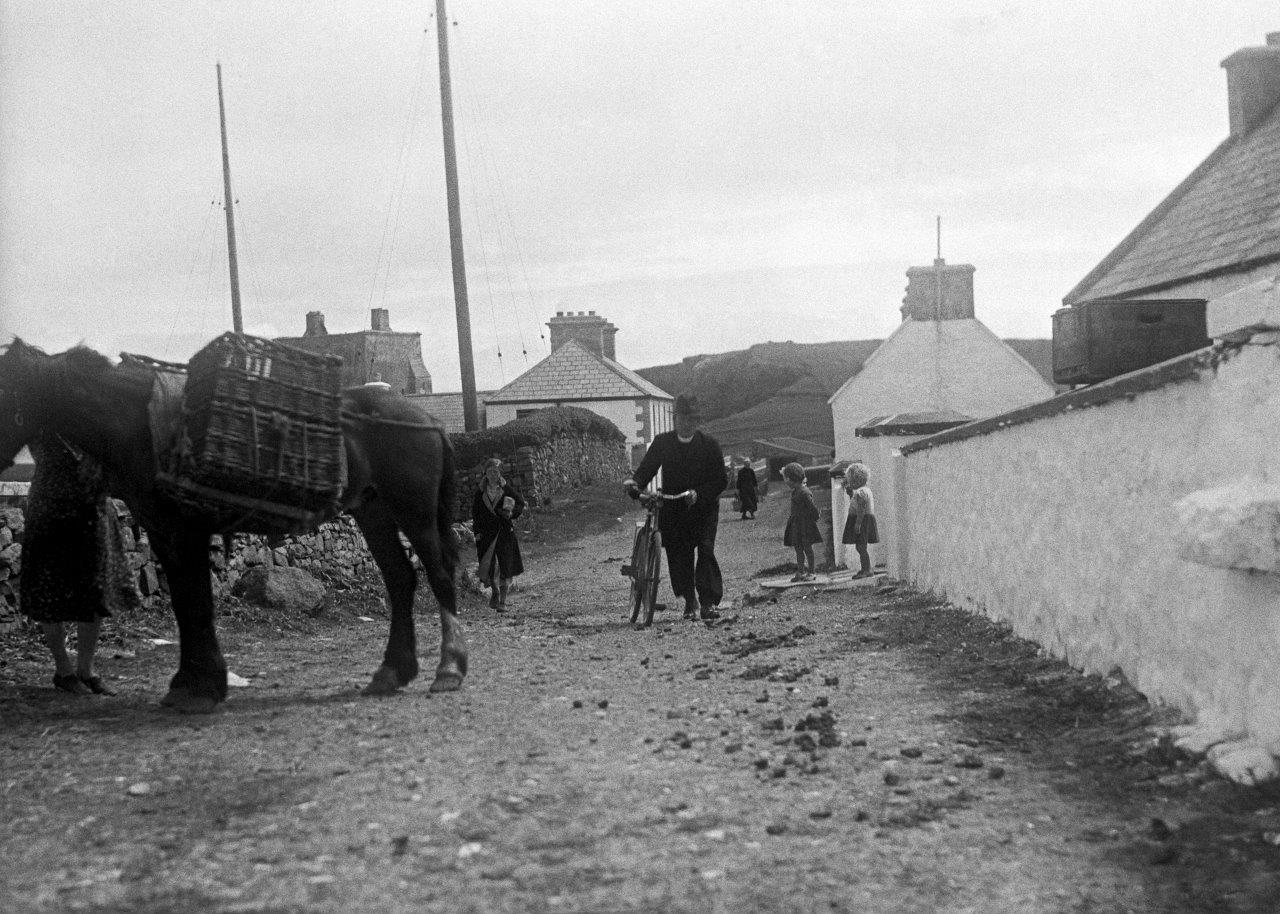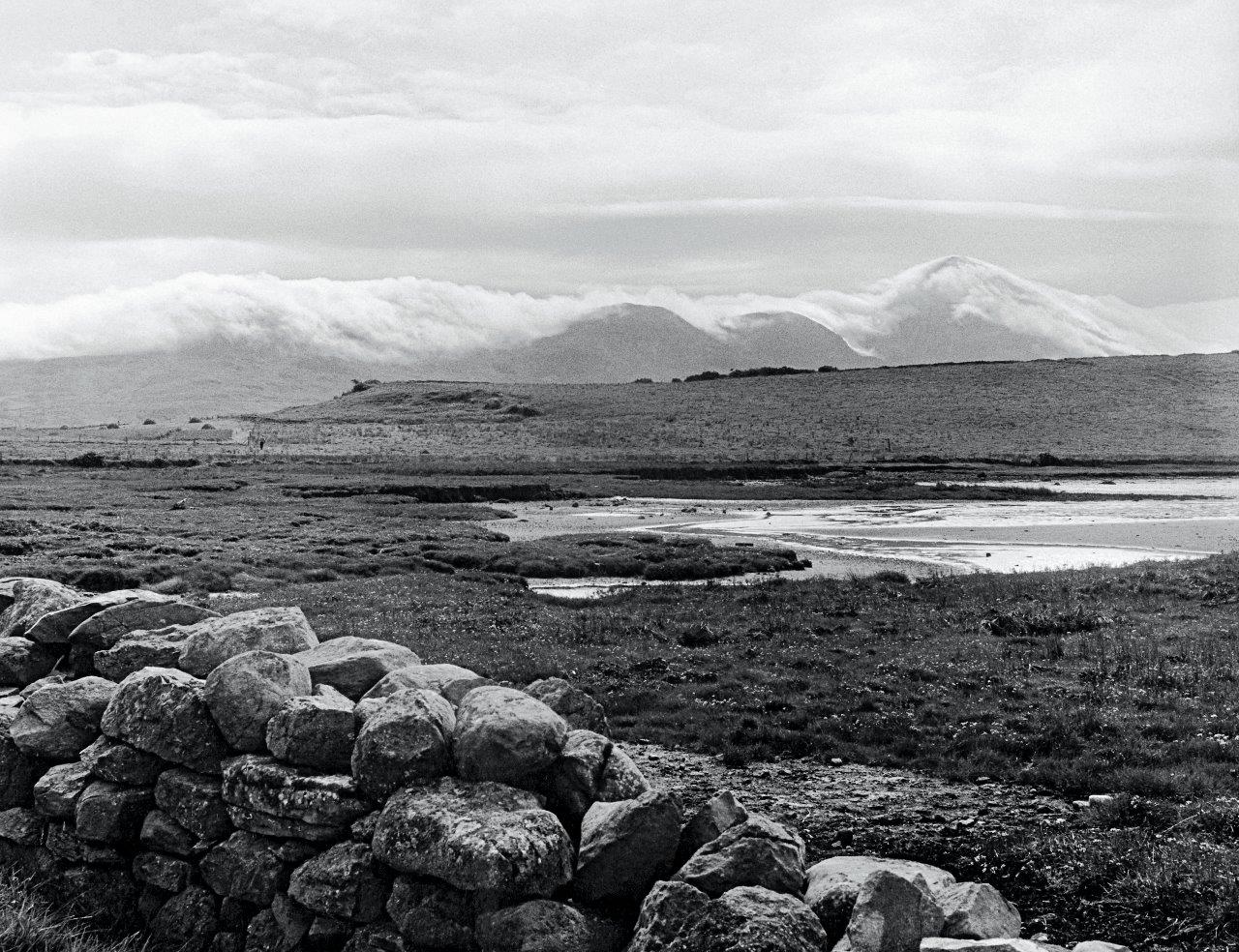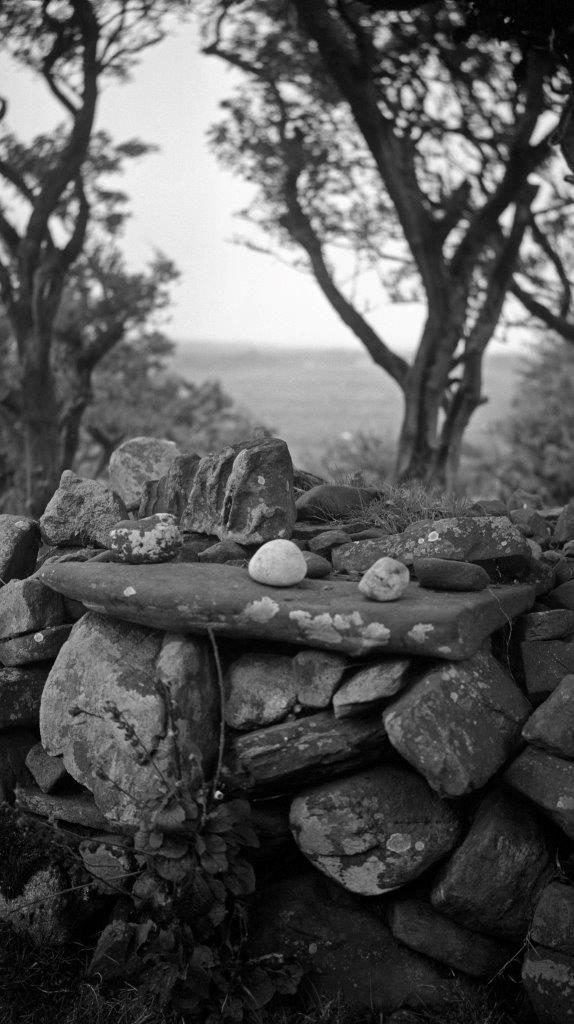Tom, Jack, Mary and Thomas Kelly are working to bring in the hay but pause their efforts for Helen to photograph the scene. The Kelly’s are near Granuaile’s Castle in Carraigahowley, Co. Mayo. Farmers usually wore work shirts while laboring. New shirts were worn on Sundays only, transitioned to weekday wear later, then became work shirts as they aged. The men wore galluses (suspenders) to hold up their trousers even when wearing a belt. During “The Emergency” years of the Second World War, clothes and other goods were scarce and beyond most people’s modest means. Mending was common as people made do with what they had.
|










